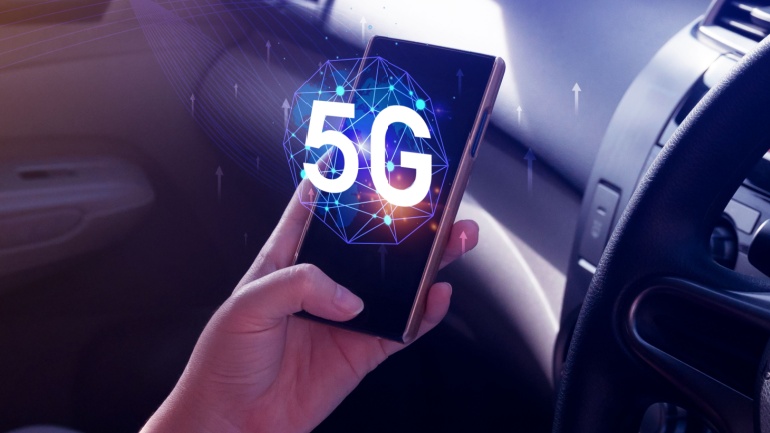With 5G networks still being deployed around the globe and 4G and even 3G networks still in use in many parts of the world, the term 6G is already a huge topic in the industry.
6G is the name for what will be the sixth generation in cellular technology, with a particular focus on increasing the capabilities and reducing the latency of wireless and edge networks. These are early days in the life of 6G and thus far this technology is only a theoretical discussion.
The networks of the future will be a key component in virtually all areas of our lives, society and industry, meeting the communications needs of people and intelligent machines. So, let us dive into the world of 6G and explore what possibilities it holds.
What will 6G be?
6G will be the sixth generation of mobile communications. It is still obscure what the final form of 6G will be until it is standardized. Experts say that the 6G revolution will focus on connecting and managing billions of machines in our digital future, from macro to micro to nano. However, it is generally agreed upon that the 6G standard will be the next generation communication standard.
6G technology will shake up innovation, take artificial intelligence to the next level, and revolutionize the healthcare and data sectors, but may also create unprecedented privacy concerns. The innovations of 6G will shape the network that connects just about all devices at once, making technologies that are not possible today a reality.
Once established, the 6G network will have five predecessors, starting with 1G, the analog technology; and then 2G, the digital one that enabled text messaging; 3G, the smartphones and video calling enabler; 4G, the current standard worldwide that has provided opportunities to support our modern digital lifestyle. And of course, the latest generation available – 5G – that is currently being deployed worldwide.
The possibilities of 6G
There is no definite indication of what 6G will include or how important its achievements will be, but early predictions suggest that the two main advancements of 6G will be the increase in speed and reduced latency. 6G will be a big leap forward, even in contrast with the new 5G networks that are now being deployed. 6G will operate in the terahertz (THz) bands from 100 GHz to 10THz, providing a maximum data rate of 1000 gigabits per second with delays of less than 100 microseconds. 6G is said to be a thousand times faster than 1 Gbps – the fastest speed found on most home Internet networks today, and 100 times faster than 10 Gbps, the hypothetical maximum 5G speed. It is important to remember that this performance metric is still just an estimate, and there is still a long way to go before reaching that speed.
With real-time and human-like data processing, it will be possible to gain more comprehensive experience and accurate operations, which was not previously possible in most industries. The speed and accuracy of 6G could help with more advanced technologies and robotics for industrial applications such as specialized manufacturing and robotic surgeries. 6G will also support the augmentation of technologies such as AI, mixed and extended reality, and communications at ultra-high speed.
6G will transfer all the physical things into the computing realm. Not only will it operate as a connector, but as a physical systems controller as well, stretching from simple terminals and sophisticated and responsive robot control to augmented reality applications to ensure maximum computational efficiency when interconnected with communications in a network computing fabric.
With regards to reliability, the next-gen network will be able to grasp new confidential computing technologies, improve the availability of services and provide advanced security identities and protocols, ensuring comprehensive reliability.
All considered, the 6G elements will establish a seamless system with all the necessary capabilities, enabling a vision for continuous intelligent communications. With ultra-fast speeds, reliable systems, and highly efficient computing, future networks will provide unlimited connectivity for future applications and services. With technology developing at rapid speed, 6G is bound to be a broad innovation platform and the core of new emerging technologies.
6G development projects
In Europe, the 6G flagship project 6Genesis aims to bring together 6G research technologies. The project is centered at the University of Oolu in Finland.
Hexa-X, is another EU’s flagship research initiative led by Nokia Oyj and Ericsson, funded by the European Commission. This project includes the active involvement of key European stakeholders in the industry and academia in developing a shared 6G vision and defining a framework for advanced technology tools.
Japan is allocating $482 million to promote 6G in becoming widespread over the next few years. The financing will also aid in building a facility where researchers will be able to work on wireless projects. The overall goal of the country is to highlight exceptional mobile technologies by 2025.
In South Korea, Samsung is working on 6G development and believes that this technology is extremely promising for advanced technologies such as holograms. Samsung predicts that the first 6G network could be released as early as 2028.
In Germany, Vodafone has launched a 5G and 6G R&D center in Dresden, focusing on research and development of technologies such as 5G and future 6G systems, as well as specific applications in autonomous driving, combined agriculture, chemistry, construction and OpenRAN.
In the US, AT&T, Verizon and T-Mobile, along with ATIS are leading the Next G Alliance industry initiative to help organize and drive 6G research across North America. Also, AT&T, Nvidia, Samsung America, Qualcomm and InterDigital have partnered for a 6G research project in the US, establishing a center at the University of Texas called 6G@UT and are working to establish the groundwork for the upcoming technology.
As stated by the official Chinese news agency, the country has already launched an experimental 6G satellite into orbit. The satellite is reportedly one of 13 new satellites deployed by China in the Long March-6 missile that was launched in November 2020. According to the CNIPA (China National Intellectual Property Administration), the country holds 35% of approximately 38,000 patents related to 6G.
Conclusion
6G promises to bring exciting speed and reliability possibilities. While it may take up to a decade for it to manifest, companies are already anticipating the best ways to use the next-gen network as the technology continues to evolve to support our hyper-connected world. All in all, 6G is set to raise the bar even higher for distant future networks.







